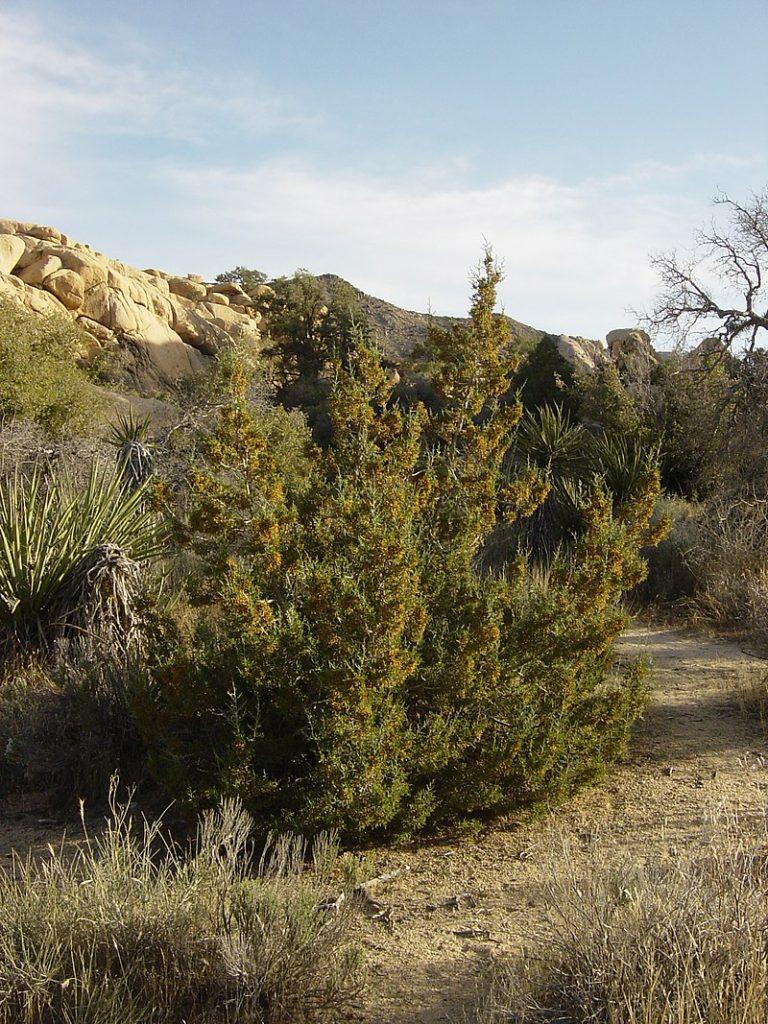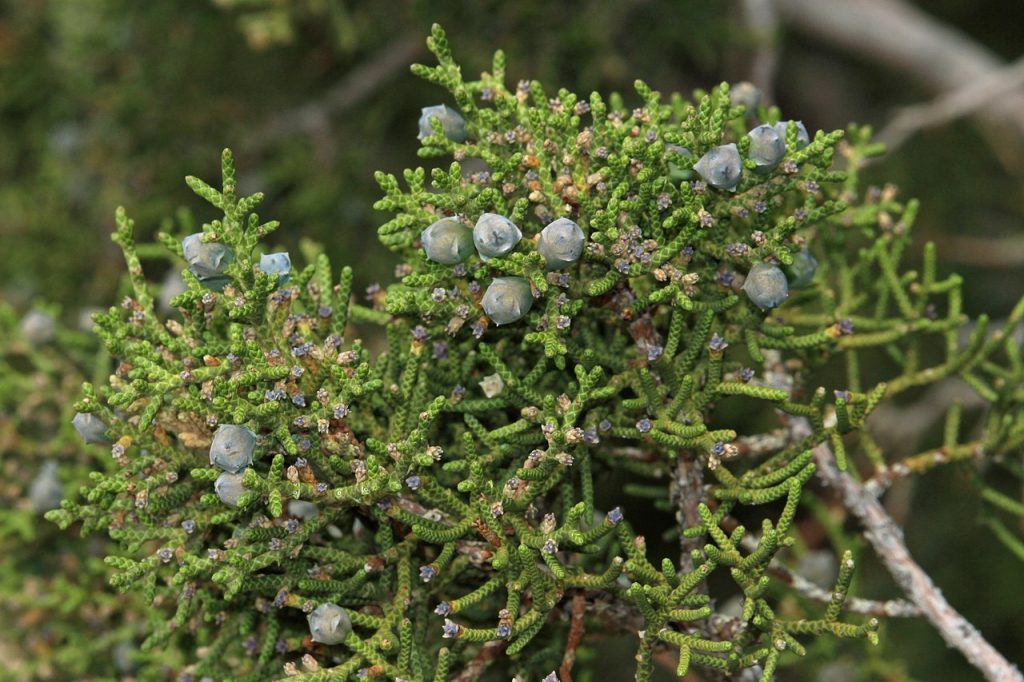
Also known as California white cedar, sweetberry cedar, desert white cedar, and Cedros Island juniper this evergreen small tree is native to dry soils at moderate elevations in Arizona, California, Nevada, and Baja California. It is a member of the cypress family, Cupressaceae, that consists of coniferous trees and shrubs including cedar, arborvitae, and redwood. The tree grows up to about 25′ tall and usually has multiple trunks with thin gray bark that exfoliates in thin strips. The scale-like leaves are bluish green, 1/32 to 3/16″ long, and arranged in opposite decussate pairs or whorls of 3. Male and female cones are usually borne on different plants. They are berry-like, .08 to .5″ long, have a blue whitish waxy bloom and mature to red-brown. Male cones are oblong and shorter than the spheric to ovoid female cones. The pollen is released in late fall to early spring and the small angled, brown seeds mature in about 8 or 9 months and are edible. California juniper provides food and shelter for a variety of animals including birds and mammals. The plant takes pruning well and can be used as a hedge, privacy screen, or bonsai. In addition, its tolerance of heat, drought, and lean and alkaline soil make it useful for many purposes including erosion control and xeriscaping. The genus name, Juniperus, comes from the Latin words junio, meaning young, and parere, to produce, referring to its evergreen leaves. The specific epithet, californica, is the Latinized name of the state where the tree is native and common. Photo Credit Wikipedia

Type: Evergreen small tree
Bloom: Not applicable
Outstanding Feature: Evergreen foliage; resistance to heat, drought, lean soil, alkaline soil, and pruning
Form: Rounded
Growth Rate: Slow
Size: 25′ H x 20′ W
Light: Full sun
Soil: Sandy, dry, well-drained
Hardiness: Zones 8-10
Care: Low maintenance
Pests and Diseases: Generally healthy
Propagation: Cuttings in fall, stratified seed (very difficult)
Outstanding Selections: None
Photo Credit Walter Siegmund Wikimedia Commons